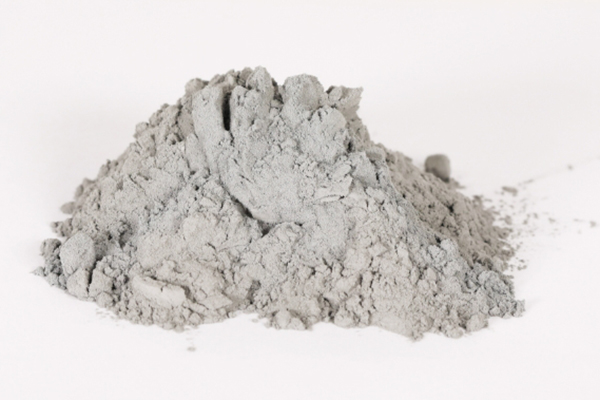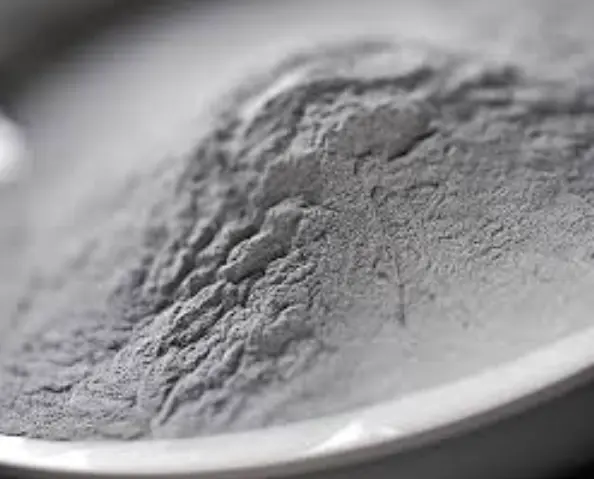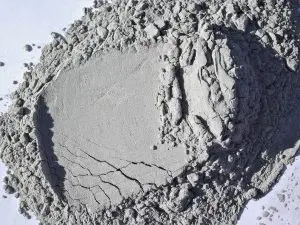As a factory owner with over a decade of experience in producing specialized building materials, I’ve seen firsthand how a single, seemingly simple component can be the linchpin of a massive industrial process. That component is aluminium powder. For procurement officers, engineers, and construction leaders, understanding the nuances of this fine metallic powder is not just academic—it’s critical for project success, product quality, and the bottom line. This article will pull back the curtain on high-purity aluminium powder, sharing insights from our production lines. We’ll explore its manufacturing, applications, and what separates a high-quality powder from a batch that causes production headaches. This is the guide I wish my clients had before they made their first purchase.
My name is Allen, and as the head of a professional water-based aluminum powder slurry factory, I aim to demystify this essential material. We will delve into why purity levels like 99.9% and 99.99% matter, how particle characteristics dictate performance, and how to choose a supplier who can be a genuine partner in your success.
What Exactly is High-Purity Aluminium Powder?
At its core, aluminium powder is a material composed of extremely fine particles of aluminium metal. Think of it as aluminium in a granular or flour-like form. When we talk about "high-purity," we are referring to a product that is almost entirely aluminium, typically containing 99.9% or even higher concentrations of the element. This isn’t just a block of aluminium ground down; it’s a sophisticated product created through a highly controlled process called atomization. The final result is a fine, often spherical powder, with each particle having specific properties that make it suitable for a wide range of industrial uses.
The character of this powder is defined by several key metrics: its purity, its particle size and shape, and its particle size distribution. For instance, a powder with a fine particle size has a much larger surface area per gram compared to a coarser powder. This dramatically increases its reactivity, which is a crucial property for many chemical applications. The shape of the particles, whether spherical or irregular (flake), also dictates how the powder behaves, whether it’s being mixed into paint or used in advanced manufacturing. Understanding these basics is the first step to sourcing the right aluminium powder for your specific needs.
How is Industrial Aluminium Powder Manufactured in a Modern Factory?
The journey from a solid ingot of aluminium to a fine, uniform powder is a testament to precision engineering. The most common method we employ in our factory is gas atomization. This process starts with melting high-quality raw materials—aluminium ingots of a specific purity—in a furnace. Once the molten aluminium reaches the perfect temperature, we atomize it. This involves forcing the liquid metal through a specialized nozzle into a high-pressure stream of inert gas, like nitrogen or argon. This violent collision shatters the molten metal into billions of microscopic droplets, which cool and solidify into spherical powders as they fall through the atomization chamber.

The reason for using an inert gas is critical: it prevents the hot aluminium from reacting with oxygen in the air. Excessive oxidation during this stage would create an undesirable thick layer of aluminium oxide on the particles, reducing the purity and affecting the final performance of the powder. After atomization, the collected aluminium powder is carefully sieved and classified based on particle size to meet the stringent specifications required for different applications. This entire manufacturing operation is done in a controlled environment to prevent contamination and ensure product consistency.
Why is Particle Size So Critical for Aluminium Powder Applications?
I often tell my clients that when it comes to aluminium powder, size is everything. The particle size and, just as importantly, the particle size distribution, are the primary drivers of the powder’s performance. A fine powder with a small particle size has an exponentially larger surface area compared to a coarse powder of the same weight. This increased surface area makes the powder far more reactive. In chemical processes, like the production of aerated concrete or in pyrotechnics, higher reactivity leads to faster and more complete reactions. For instance, a finer powder will generate gas more efficiently, a critical factor for controlling the density of lightweight concrete blocks.
Conversely, for other applications like thermal sprays or certain types of coating, a different particle size distribution might be required to achieve the desired density and flow characteristics. A uniform, narrow distribution ensures predictable and repeatable results, which is a major concern for procurement officers like Mark who value consistency. If a batch of aluminium powder has an inconsistent particle size, it can lead to failed production runs, wasted materials, and project delays. That’s why at our facility, we use laser diffraction analyzers to meticulously measure and certify the particle size of every batch of powder we produce.
What are the Main Applications for Fine Aluminium Powder?
The unique properties of aluminium powder make it a surprisingly versatile material, a key component in industries that seem worlds apart. Its high reactivity, lightweight nature, and metallic characteristics are highly sought after. Over the years, I’ve supplied powder for a vast array of uses, and it always fascinates me to see the innovation it enables.
Here is a breakdown of some of the most common applications:
| Industry Sector | Specific Application | Key Powder Property |
|---|---|---|
| Construction | Aerated Concrete (AAC/ALC) | High reactivity for gas generation |
| Paints & Coatings | Metallic pigments, protective coatings | Flake shape for reflectivity, corrosion resistance |
| Chemicals | Catalyst, reducing agent | High surface area, high purity |
| Aerospace & Defense | Solid rocket fuel, explosives | High energy release during combustion |
| Pyrotechnics | Fireworks, flares | Bright light and sparks from combustion |
| Advanced Manufacturing | Additive manufacturing (3D Printing) | Spherical shape, uniform flow |
| Metallurgy | Thermite welding, steel deoxidation | Strong reducing agent |
From creating brilliant sparks in a firework to acting as a crucial reducing agent in various chemical reactions, the application of aluminium powder is extensive. In the paints and coatings industry, flake powder is used to create a silver, metallic finish and provide a protective barrier against corrosion. In additive manufacturing, or 3D printing, fine spherical aluminum powders are used to print complex, lightweight metal parts for the aerospace and automotive sectors. Each application demands a specific grade of powder, underscoring the importance of working with a knowledgeable manufacturer.

Is Aluminium Powder Explosive and How is it Handled Safely?
This is a question I address with the utmost seriousness. Yes, fine aluminium powder can be explosive under specific conditions. This hazard is not due to any inherent instability in the aluminium itself but is a function of its physical form. The same property that makes it highly reactive—its massive surface area—also makes it susceptible to rapid combustion when dispersed in the air as a dust cloud and exposed to an ignition source. This is known as a dust explosion, a risk common to many fine combustible powders, not just aluminium.
Because of this risk, handling aluminium powder requires strict safety protocols. In our manufacturing plant, we use specialized equipment and procedures to prevent dust clouds from forming in uncontained areas. We control ignition sources, use grounding techniques to prevent static electricity buildup, and have robust ventilation and dust collection systems. For end-users, it’s crucial to store the powder in a cool, dry place away from heat, sparks, and water. Using proper personal protective equipment (PPE) and ensuring good housekeeping to prevent dust accumulation are non-negotiable. While the powder is a powerful tool, its power demands respect and responsible handling to mitigate the explosive risk.
What is the Role of the Aluminium Oxide Layer on the Powder?
Every particle of aluminium powder, no matter how high its purity, is coated with a very thin, invisible layer of aluminium oxide (Al₂O₃). This layer forms instantly and naturally the moment the aluminium is exposed to oxygen. While it might sound like a form of contamination, this oxide layer is actually incredibly important. It’s a hard, inert, and protective passivating layer that shields the highly reactive aluminium metal underneath from the environment. This prevents further oxidation and helps stabilize the powder, making it safe to handle and transport.
However, the thickness of this oxide layer is a delicate balance. A layer that is too thick can inhibit the desired chemical reaction, reducing the powder’s efficiency as a reactant or a catalyst. In applications like aerated concrete, the reaction needs to be timed perfectly, and an inconsistent oxide layer can throw off the entire process. A reputable manufacturer carefully controls the manufacturing and storage conditions to ensure this protective layer is present but remains microscopically thin and uniform across the entire batch of powder. This ensures the aluminium powder is both stable and ready to perform its intended function when needed.
How Does Purity (99.9% vs. 99.99%) Affect Powder Performance?
When a client is deciding between different grades of aluminium powder, the question of purity—for example, 99.9% versus 99.99%—inevitably comes up. Does that extra "9" really make a difference? The answer is a definitive yes, but its importance depends entirely on the application. The impurities in aluminium powder, even in trace amounts, can be elements like iron, silicon, copper, or titanium. For many general industrial applications, a purity of 99.9% (often called "three-nines") is more than sufficient and offers a great balance of performance and cost.

However, for high-tech or highly sensitive chemical processes, even minuscule impurities can be detrimental. In the electronics or pharmaceutical industries, or when producing advanced materials, an ultra-high-purity 99.99% ("four-nines") aluminium powder might be required. These impurities could interfere with delicate chemical reactions, compromise the structural integrity of a 3D-printed part, or affect the electrical properties of a component. For example, certain metallic impurities like chromium could act as an unwanted catalyst or fail to meet the stringent regulatory requirements of a specific industry. The higher the purity, the more predictable and controlled the behavior of the aluminium powder, which is essential for cutting-edge application areas.
What Should You Look for in a Reliable Aluminium Powder Supplier?
For a procurement officer like Mark, choosing a supplier is about more than just finding the best price; it’s about building a partnership that guarantees quality and reliability. After years of being on the other side of these conversations, I know what separates a great supplier from one who will cause problems down the line. Inefficient communication and shipment delays are major pain points that a good partner works tirelessly to avoid.
When vetting a potential aluminium powder supplier, here are the key areas to investigate:
- Quality Consistency: Ask for batch-to-batch data. Do they provide a Certificate of Analysis (CoA) with every shipment detailing purity, particle size distribution, and other key metrics?
- Technical Expertise: Can their sales team answer detailed questions about the powder, or do they just read from a spec sheet? A good supplier has experts who can help you choose the right grade for your application.
- Manufacturing Control: Inquire about their manufacturing process. Do they use modern techniques like gas atomization? What are their quality control procedures? A tour of their factory, even a virtual one, can be very telling.
- Certifications: Do they have ISO 9001 or other relevant quality management certifications? Can they provide Material Safety Data Sheets (MSDS) that comply with your country’s regulations?
- Logistics and Packaging: How do they package the powder to prevent moisture and contamination? Do they have experience shipping to your country and handling the logistics for potentially hazardous materials? This is crucial for preventing damage and delays.
A trustworthy supplier will be transparent about their processes and proactive in their communication. They understand that their success is tied to yours and will work to provide a consistent, high-quality powder that meets your exact specifications every time.
How Does Aluminium Powder Contribute to Lightweight Concrete Production?
This is where my expertise as a manufacturer truly comes to the forefront, as it’s one of the primary applications for the aluminium pastes we specialize in. Aluminium powder is the magic ingredient in Autoclaved Aerated Concrete (AAC), a lightweight, precast building material. In this process, a small, carefully measured amount of aluminium powder (or more commonly, a stabilized aluminium paste) is mixed into a slurry of cement, lime, sand, and water.
The aluminium reacts with the alkaline components in the slurry in a controlled chemical reaction. This reaction releases millions of tiny hydrogen gas bubbles throughout the mixture. It’s very similar to how yeast makes bread rise. These bubbles create a vast network of tiny, disconnected air pockets, causing the concrete to expand in its mold. After this "rising" process, the material is cured in a high-pressure autoclave. The heat and pressure of the autoclave cause final chemical changes that give the material its high strength and dimensional stability. The result is a building material that is up to 80% air, making it incredibly lightweight yet strong and offering excellent thermal and acoustic insulation. The quality and reactivity of the aluminium powder directly control this expansion, making it a critical raw material for producing consistent AAC Block and high-performance ALC Wallboard. Our specialized aluminium pastes for aerated concrete are engineered to optimize this gassing reaction for reliable and efficient production.
What Quality Control Measures Ensure the Consistency of Aluminium Powder?
Consistency is the single most important word for any industrial consumer of aluminium powder. An unexpected change in reactivity or particle size can halt a production line. That’s why a rigorous quality control (QC) process is not a luxury; it’s a necessity. At our facility, QC is integrated into every step of the manufacturing journey, from inspecting incoming raw materials to final product testing.
Our dedicated in-house lab is the heart of our QC operation. Here’s a glimpse into our process:
- Raw Material Inspection: We verify the purity of the aluminium ingots before they even enter the melt.
- In-Process Monitoring: During atomization, we continuously monitor variables like temperature and gas pressure to ensure the formation of uniform spherical particles.
- Final Product Analysis: Every single batch of finished aluminium powder undergoes a full suite of tests. We use laser diffraction to confirm the particle size distribution, chemical analysis to certify the aluminum content and purity (e.g., confirming it’s 999 aluminium powder), and other tests to measure properties like apparent density.
- Batch Traceability: Each batch is given a unique code, and a sample is retained. This allows us to trace any product back to its exact production parameters and provide a detailed Certificate of Analysis that gives our clients complete confidence in the powder they are receiving.
This stringent approach ensures that whether a client orders a pallet today or a container six months from now, the aluminium powder they receive will perform exactly as expected. It’s how we build trust and turn first-time buyers into long-term partners.
Key Takeaways
Navigating the world of industrial materials can be complex, but understanding the fundamentals of aluminium powder can empower you to make better purchasing decisions. Here are the most important things to remember:
- Purity and Particle Size are Paramount: The performance of aluminium powder is dictated by its purity (e.g., 99.9%) and its physical characteristics, especially particle size. These factors determine its reactivity, making it suitable for specific applications.
- Manufacturing Matters: The atomization process is key to producing high-quality, spherical powder. A controlled manufacturing environment is crucial for achieving consistency and preventing contamination.
- Safety is Non-Negotiable: Fine aluminium powder is a combustible dust. Always follow strict safety protocols for handling and storage to mitigate the explosive risk.
- Applications are Diverse: This versatile powder is a critical component in everything from lightweight concrete and metallic paint to pyrotechnics and 3D printing.
- Choose Your Supplier Wisely: A reliable supplier is more than a vendor; they are a partner. Look for technical expertise, robust quality control, transparent communication, and a proven track record of delivering a consistent powder.
Post time: 8 月-06-2025




